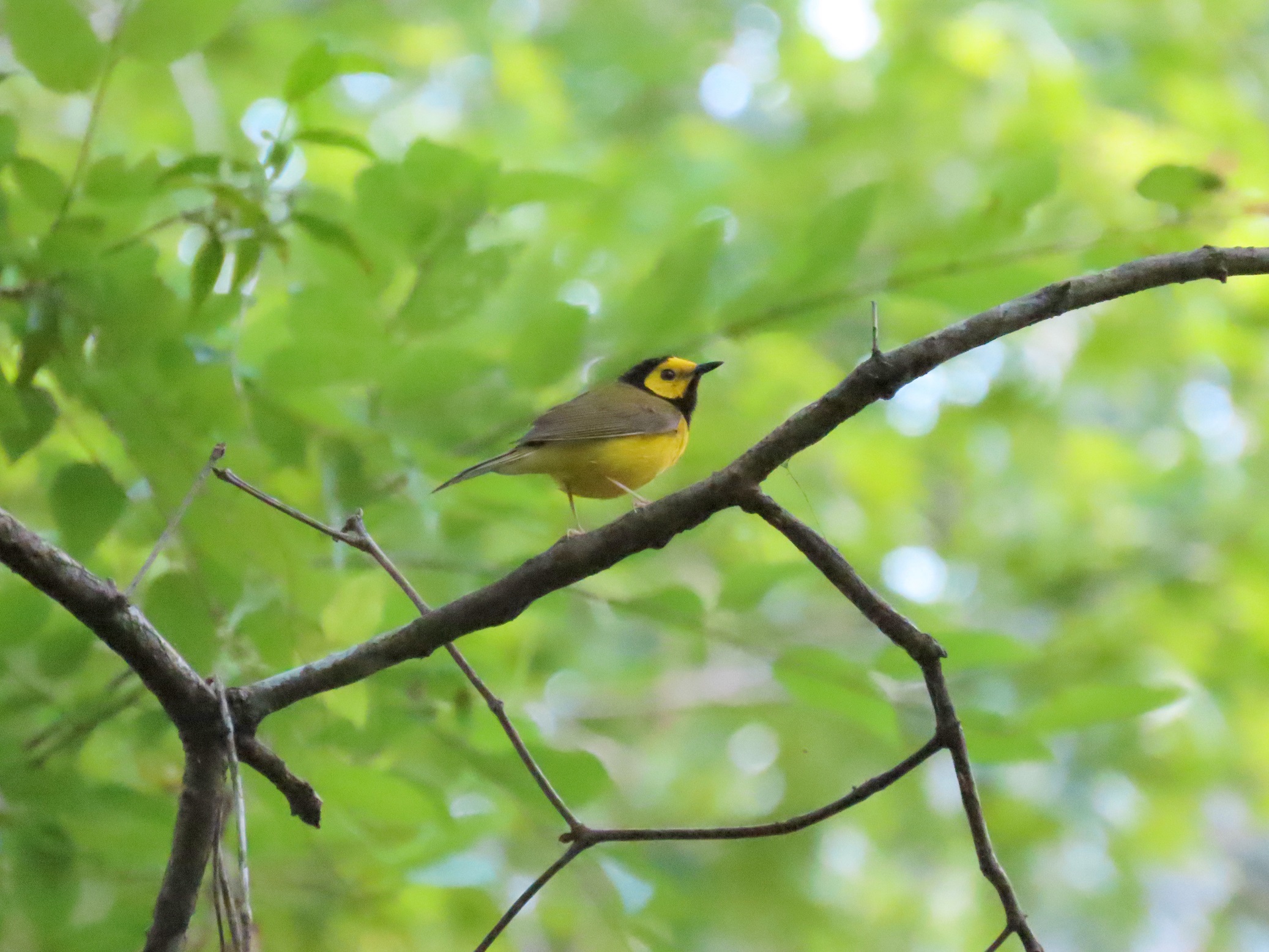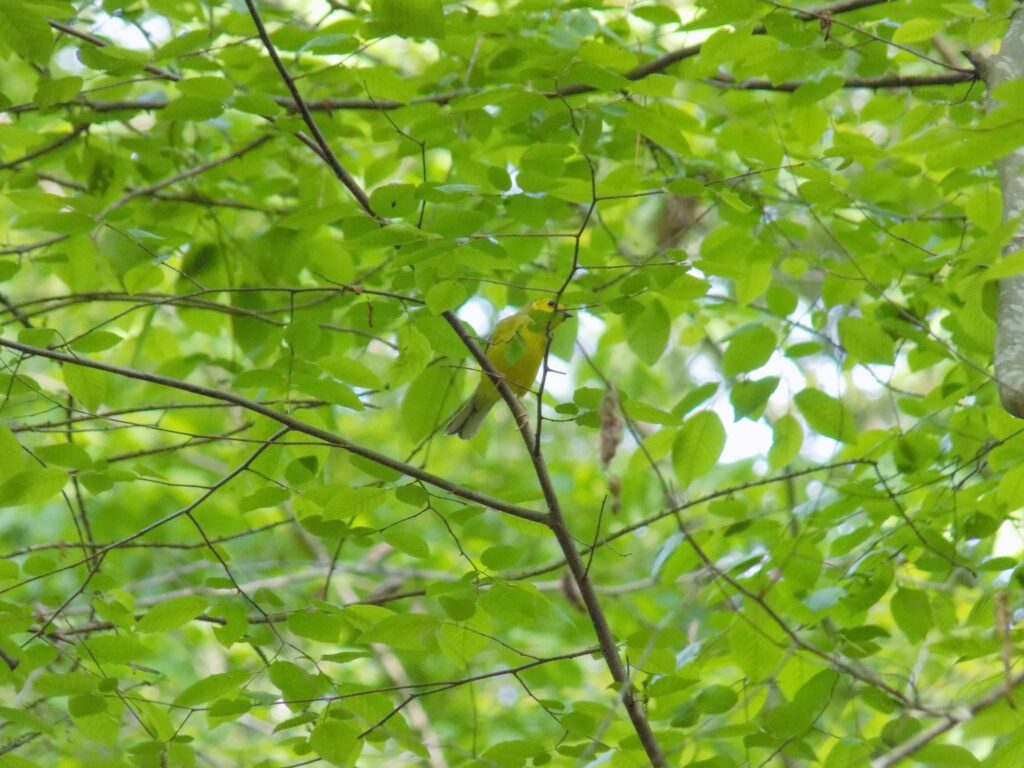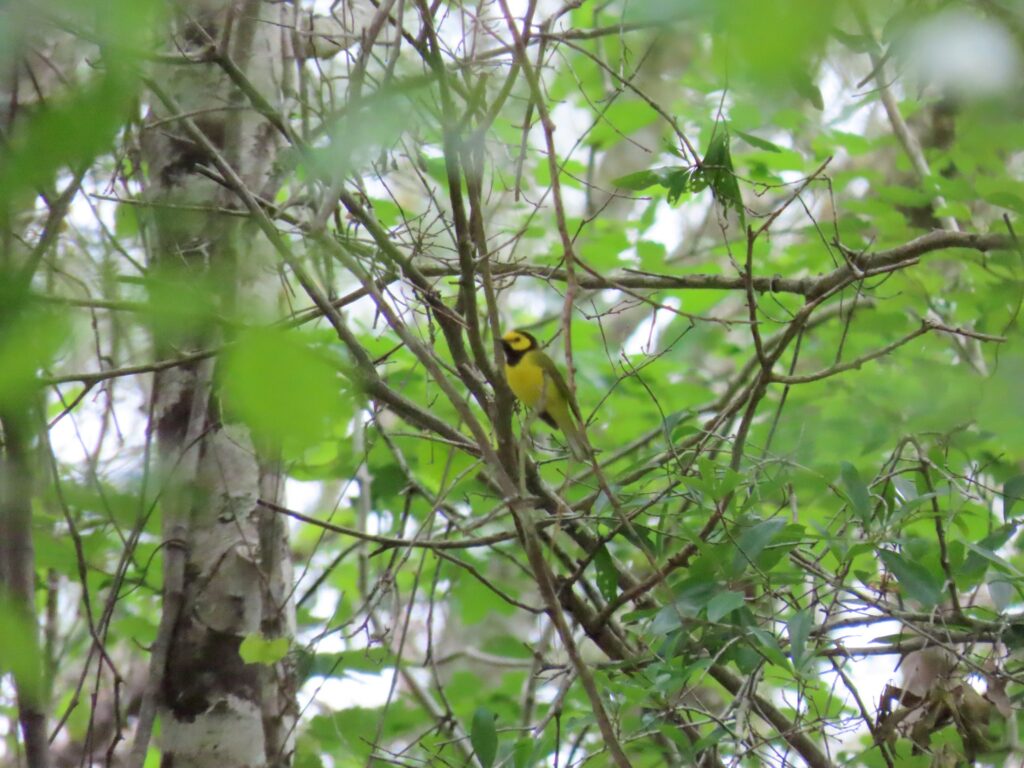



This week for Flora and Fauna Friday it’s the balaclava’d bard of the bottomland, the Hooded Warbler (Setophaga citrina).
Amidst the droning drill of cicadas and bloodthirsty buzzing of mosquitos, a high and piercing warble hacks through the stagnant atmosphere of the floodplain forest. A Hooded Warbler sings his heart out as he darts and dashes from ash to elm, down grape to cane, taking but a moment at you to crane, a curious intruder in his floodplain domain. It’s always a wondrous sight in the Lowcountry spring when a male Hooded Warbler graces you with his presence. He’s a songbird who masks his face in a hood of black and drapes his back in olive, as if an extension of the green-washed shadows below the forest where he lurks. Yet, in stark contrast, down his belly and through opening in his hood beams the radiant glow of golden yellow, like a sunbeam crashing onto the forest floor. It’s an experience that arrests thought and directs attention squarely to it.
Hooded Warblers are found widely within the Southeast and all across South Carolina from spring to fall. They inhabit mature hardwood forests and river valleys. Here in the Lowcountry and Sea Islands, they are particularly fond of river floodplains and swamp margins where they forage within the dense and shaded tangle of understory plants. Hooded Warblers subsist on a diet of insects, spiders, and other arthropods, which they glean from leaves and snatch from the air. Males and females are similar in appearance, being olive-green above and sunflower-yellow below. However, males don a signature black hood across their cap and beard, making him an unmistakable sight. Both sexes also have a black bill, pink legs, and white on their outer three tail feathers. Hooded Warblers spend their winters in the tropics of Central America and the Caribbean before returning to South Carolina in spring to nest. In the Lowcountry, males start staking out their nesting territories in early April. They do so through the power of music. Birdsong, especially with Warblers, is employed as both a fence and a billboard. Each male sings to advertise where he, himself, is to the ladies and to his rivals. He also listens to where his rivals are. If it sounds like the neighbors are encroaching on his turf, he’ll head that way to give them an earful. Although more creative mnemonics exist, in my opinion the male’s song is most accurately described as “weeta-weeta-weet-Tee-o.” It’s a clear song which alternates up and down, before rising sharply in volume and pitch for its penultimate note, then trailing away at the end.